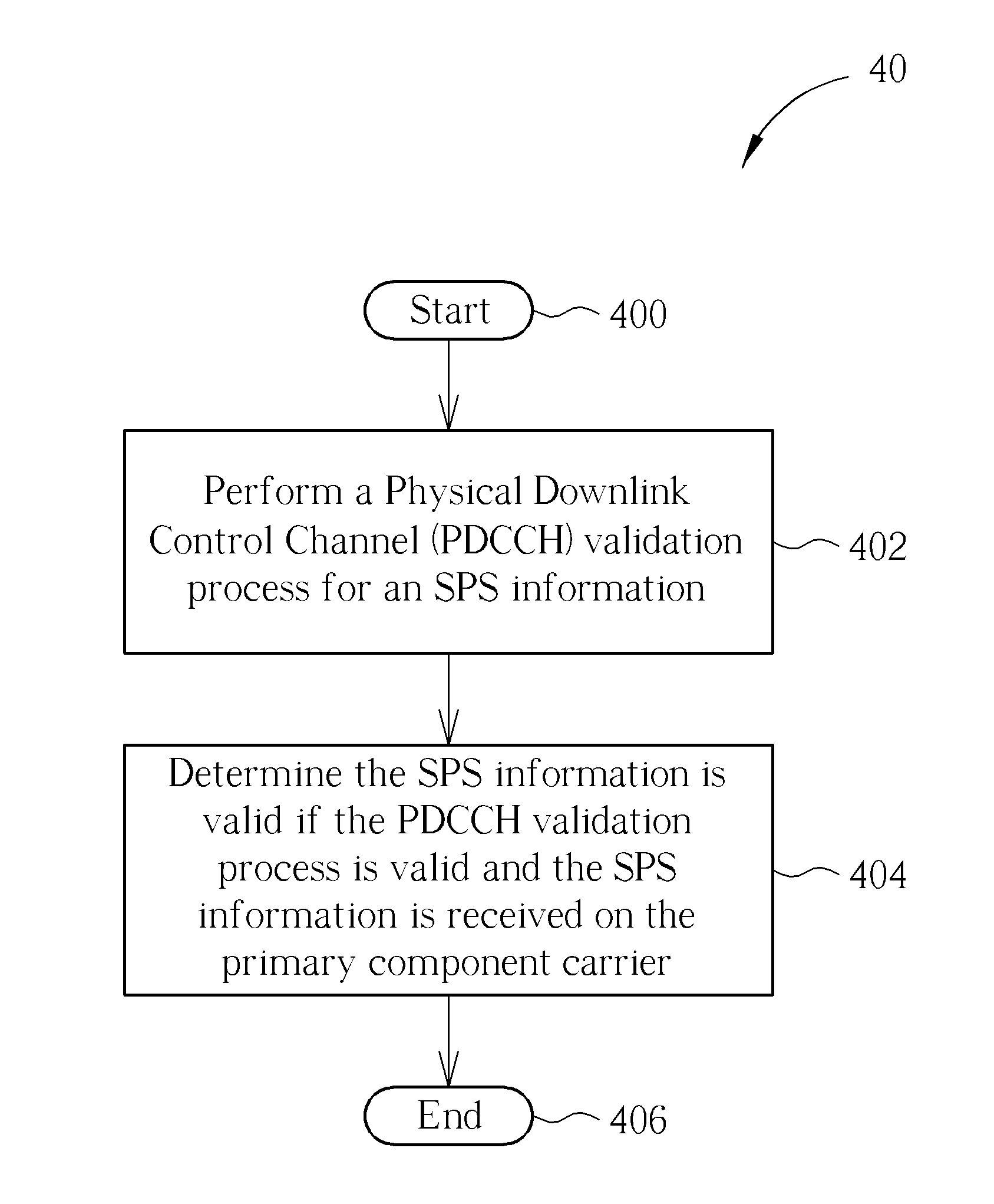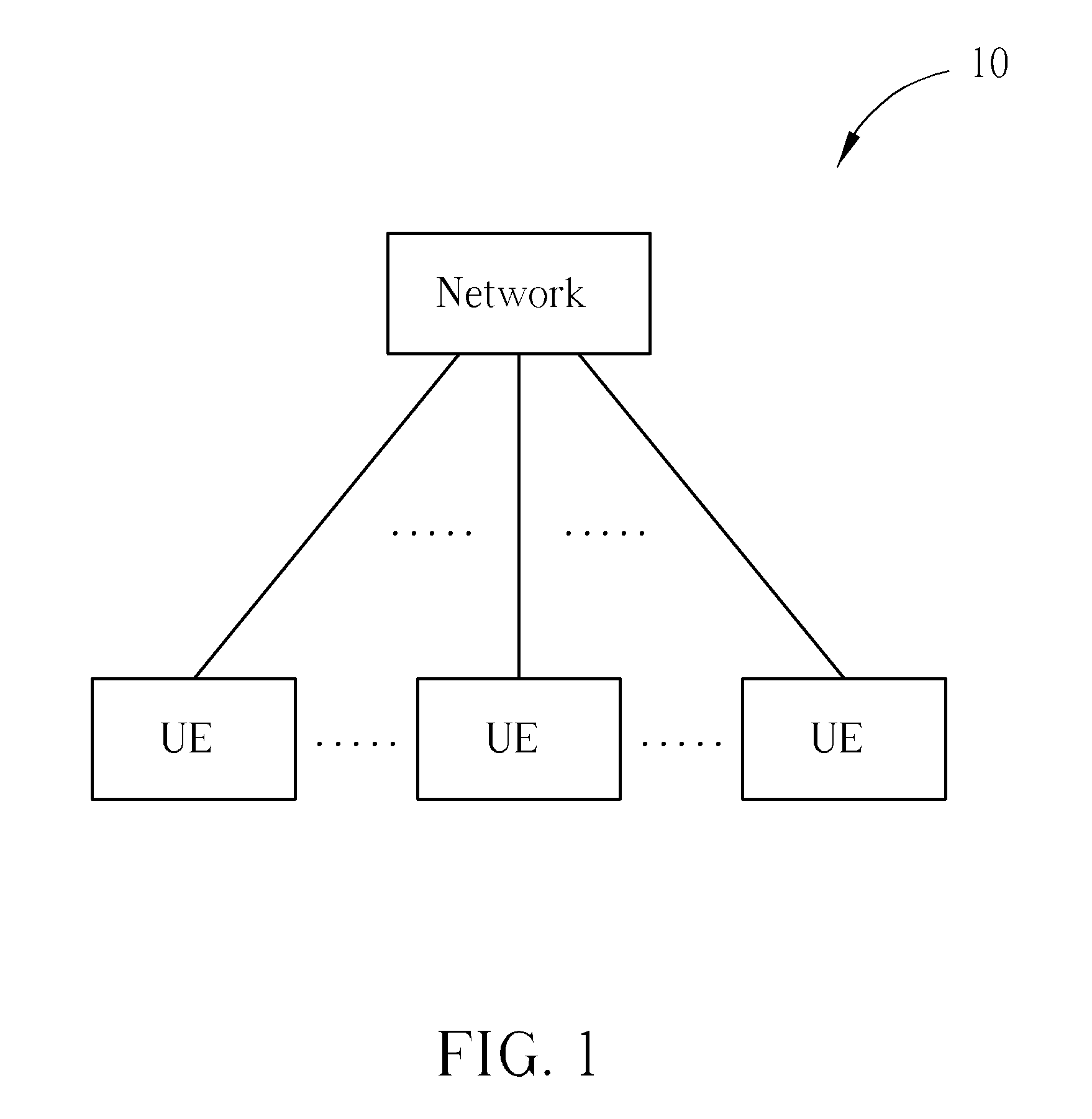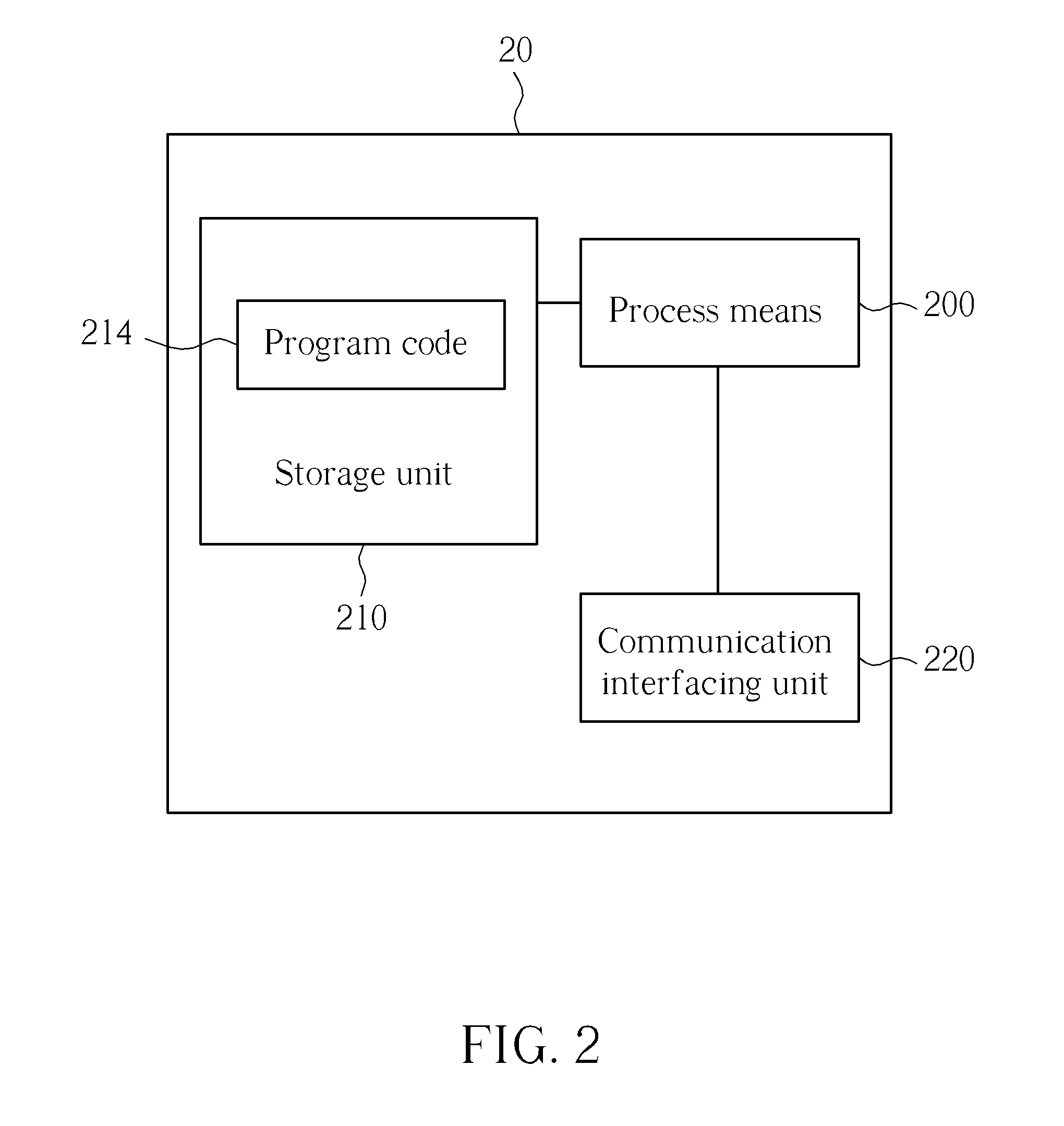Method of Handling Semi-Persistent Scheduling Cell Radio Network Temporary Identifier and Related Communication Device
- Summary
- Abstract
- Description
- Claims
- Application Information
AI Technical Summary
Benefits of technology
Problems solved by technology
Method used
Image
Examples
Embodiment Construction
[0029]Please refer to FIG. 1. FIG. 1 is a schematic diagram of an exemplary wireless communication system 10. The wireless communication system 10 can be an LTE-Advanced system, or other mobile communication systems (e.g. LTE, WCDMA, HSPA, GSM, EDGE, etc.). The wireless communication system 10 is briefly composed of a network and a plurality of user equipments (UEs), as the structure illustrated in FIG. 1. In the LTE-Advanced system, the network is referred as an evolved universal terrestrial radio access network (E-UTRAN) comprising a plurality of evolved base stations (eNBs). The UEs can be devices such as mobile phones, computer systems, etc. Besides, the network and the UE can be seen as a transmitter or receiver according to transmission direction, e.g., for uplink (UL), the UE is the transmitter and the network is the receiver, and for downlink (DL), the network is the transmitter and the UE is the receiver.
[0030]Please refer to FIG. 2. FIG. 2 is a schematic diagram of an exem...
PUM
 Login to View More
Login to View More Abstract
Description
Claims
Application Information
 Login to View More
Login to View More - R&D
- Intellectual Property
- Life Sciences
- Materials
- Tech Scout
- Unparalleled Data Quality
- Higher Quality Content
- 60% Fewer Hallucinations
Browse by: Latest US Patents, China's latest patents, Technical Efficacy Thesaurus, Application Domain, Technology Topic, Popular Technical Reports.
© 2025 PatSnap. All rights reserved.Legal|Privacy policy|Modern Slavery Act Transparency Statement|Sitemap|About US| Contact US: help@patsnap.com



